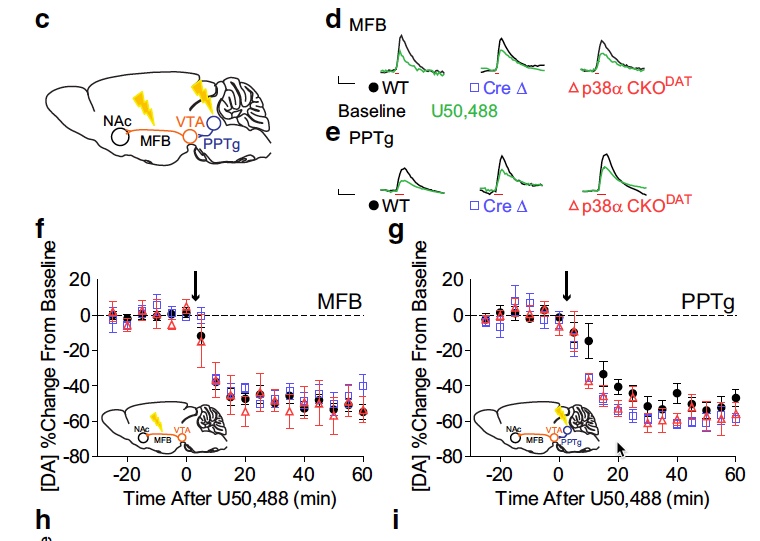This project is designed to provide preclinical assessment of the concept that kappa opioid receptor (KOR) antagonists have therapeutic potential in the adjunctive treatment of depressive disorders. The underlying hypotheses of this project are that repeated stress exposure causes dynorphin release that can exacerbate depressive symptoms; that individuals at risk of depression have lowered stress-resilience and dynorphin release can trigger an episode of depression in vulnerable individuals; and that the endogenous dynorphins have cognitive disruptive effects that can also exacerbate the depressive episode. All of those elements suggest that a drug-like, selective kappa opioid receptor antagonist that blocks the effects of stress-induced release of dynorphin in brain may have therapeutic benefit by promoting stress resilience. Extensive prior studies have established that KOR antagonists can block the dysphoria, anxiety and cognitive disruptions caused by behavioral stress exposure and that KOR agonists produce strong anxiogenic, aversive and psychotomimetic effects in humans and animal models of human behaviors. Some of the elements of the brain circuits underlying these behavioral responses have been partially described, but a better understanding of the roles of the endogenous dynorphin opioids in mediating these stress responses is needed.
The specific aims of Project 1 are designed to understand how the endogenous dynorphin system produces dysphoria and stress-vulnerability. Optogenetic manipulations of 5HT and DA release in the Dorsal Raphe Nucleus (DRN), Nucleus Accumbens (NAc), and Ventral Tegmental Area (VTA) will be done using tissue-specific expression of channel rhodopsins in serotonergic and dopaminergic neurons. Manipulation of local dynorphin release will be done by selective opto-stimulation of Pdyn-cre expressing neurons in these brain regions. Behavioral assessment of the consequences of opto-manipulation of 5HT, DA and dynorphin release in these regions will be measured by place aversion and 5-choice serial reaction task measures of cognition. Neurochemical measures of optically evoked 5HT and DA release will be measured by fast-scan cyclic voltammetry. And the effects of dynorphin release on neuronal excitability will be measured using in vivo recording of VTA neuron excitability. The experiments proposed require the collaborative efforts of Drs. Chavkin & Land (opto-stimulation of circuits), Drs. Phillips and Dankoski (FSCV recordings of evoked 5HT & DA release), and Dr. Zweifel (in vivo VTA recordings). Collectively the proposed experiments will expand our understanding of the dynorphinergic mechanisms responsible for stress-induced dysphoria and cognitive disruption.




